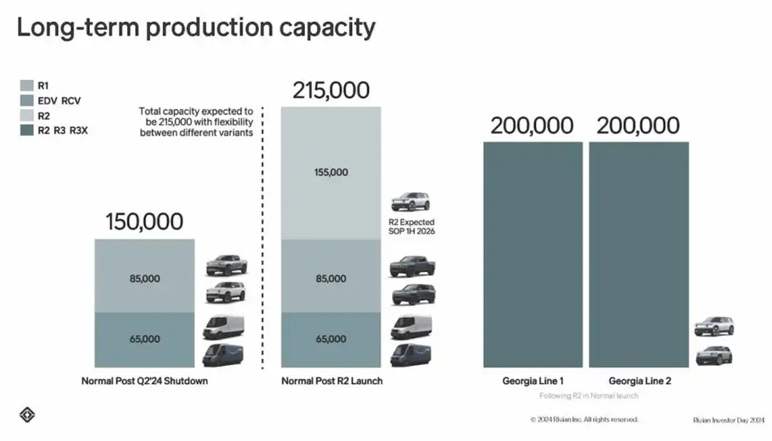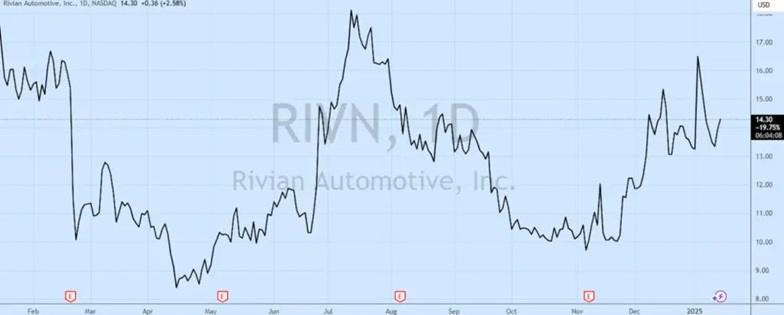Rivian, the electric vehicle (EV) maker known for its rugged R1T truck and R1S SUV, is gearing up for its next big move: the construction of a second manufacturing plant in Georgia. This ambitious project, backed by billions in government funding, promises to introduce more affordable EVs, create thousands of jobs, and solidify Rivian’s position as a leader in the electric mobility revolution. Here’s a closer look at what this means for Rivian and the future of EVs in America.

Billions in Government Backing for a Greener Future
The U.S. Department of Energy (DOE) is expected to announce a loan of approximately $6.6 billion for Rivian’s new plant as early as this week. This financing falls under the DOE’s Advanced Technology Vehicles Manufacturing (ATVM) Loan Program, designed to support innovations that improve fuel efficiency and reduce emissions.
While the exact figure isn’t finalized, the Biden administration had already signaled its support for this project in November, offering a conditional commitment of up to $6.57 billion. This investment underscores the government’s commitment to bolstering clean energy initiatives and reducing greenhouse gas emissions through sustainable vehicle manufacturing.
However, the program isn’t without its challenges. With Donald Trump potentially returning to the White House, the ATVM Loan Program may face scrutiny. During his first term, Trump sought to eliminate the program, favoring fossil fuel investments. A shift in administration could bring uncertainty to projects like Rivian’s, potentially impacting the pace of America’s transition to green energy.
The R2 and R3: Rivian’s More Affordable EVs
The upcoming Georgia facility will play a critical role in Rivian’s growth strategy, serving as the production hub for its new midsize EV lineup: the R2 SUV and the R3 crossover. These vehicles, starting at $45,000, are priced significantly lower than Rivian’s current offerings, like the R1T truck and R1S SUV, which cost nearly double.
Rivian unveiled the R2 and R3 models last March, describing them as “critical drivers” of the company’s long-term profitability. The Georgia plant will be built in two phases, with each phase adding the capacity to produce 200,000 vehicles annually. Once fully operational, the facility will manufacture 400,000 EVs per year, a substantial leap from Rivian’s current output of just under 50,000 vehicles annually at its Normal, Illinois plant.
Economic Impact and Job Creation
Beyond expanding Rivian’s product lineup, the new plant promises significant economic benefits for Georgia. Spanning 1,744 acres, the facility is located 40 miles east of Atlanta and will bring an estimated 7,500 permanent jobs to the area by 2030. Additionally, around 2,000 construction jobs will be created during the plant’s development.
This large-scale project highlights the growing economic importance of EV manufacturing in the United States. By investing in local production, Rivian is not only reducing emissions but also contributing to regional growth and workforce development.
Timeline for the Georgia Plant
Rivian has outlined an ambitious timeline for the Georgia facility. According to a DOE filing, construction could begin as early as the second quarter of 2026, with initial operations starting by the third quarter of 2027. However, the plant isn’t expected to reach full capacity until 2028.
This timeline reflects the complexity of scaling EV production. Building a plant capable of producing hundreds of thousands of vehicles per year involves extensive planning, from securing the necessary infrastructure to sourcing materials and training workers.

Environmental and Market Implications
The DOE has emphasized the environmental benefits of Rivian’s new facility, stating that it will help reduce air pollution and greenhouse gas emissions nationwide. As the EV market grows, such projects are crucial for meeting climate goals and transitioning away from fossil fuels.
Rivian’s investment in affordable EVs like the R2 and R3 also addresses a key barrier to adoption: price. By offering more budget-friendly options, the company aims to make electric vehicles accessible to a broader audience, including middle-income families looking to make the switch to greener transportation.
Rivian’s Stock and Market Position
Since announcing its plans for the Georgia plant, Rivian has seen a positive shift in its stock performance, with shares rising over 40% after its third-quarter earnings report in November. However, the company’s stock is still down 20% over the past year and remains significantly below its peak in November 2021.
Despite these fluctuations, Rivian’s focus on innovation and expansion positions it as a key player in the EV market. The Georgia plant, along with its affordable R2 and R3 models, could provide the growth and stability needed to strengthen its market presence and reassure investors.

What This Means for Drivers Aged 35 to 50
For many in the 35 to 50 age group, Rivian’s move to produce more affordable EVs is particularly exciting. This demographic often juggles family responsibilities and financial considerations, making the $45,000 starting price of the R2 SUV an attractive option. With rising gas prices and increasing awareness of climate issues, a practical, stylish, and environmentally friendly vehicle like the R2 could be the perfect fit.
Additionally, the economic benefits of Rivian’s Georgia plant will likely resonate with this group, many of whom value job creation and community development. Knowing that their vehicle purchase supports local manufacturing and sustainability goals adds to the appeal.
Rivian’s new manufacturing plant in Georgia represents a significant milestone for the company and the EV industry as a whole. Backed by billions in government funding, the facility will bring affordable electric vehicles to the market, create thousands of jobs, and contribute to a greener, more sustainable future.
As Rivian continues to innovate and expand, its commitment to making EVs accessible and practical for everyday drivers sets it apart. For those considering a switch to electric, the upcoming R2 and R3 models are worth keeping an eye on.
Stay tuned for updates on Rivian’s progress—this is just the beginning of an exciting chapter in the evolution of electric mobility.
Related Post
